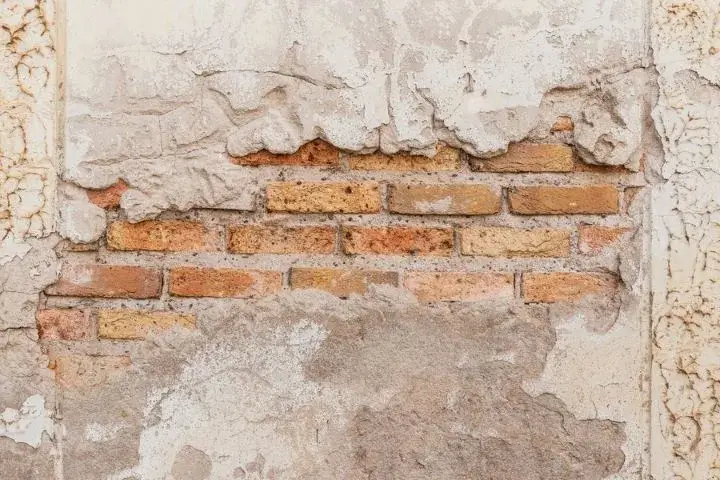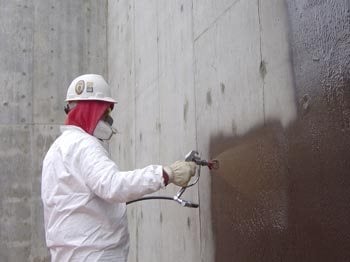Exploring the Numerous Strategies and Solutions for Effective Damp Proofing
Moisture in buildings positions considerable challenges to both structural integrity and interior air high quality. Different strategies and remedies have emerged to combat this pervasive concern. From traditional damp-proof membranes to innovative chemical therapies, each approach provides special advantages. Understanding these options is necessary for reliable dampness control. Selecting the best service depends on certain building conditions and requirements, triggering additional expedition into the most reliable moist proofing techniques readily available.
Recognizing the Reasons For Wetness
Although moisture can occur from numerous resources, recognizing these causes is essential for effective removal. Commonly, moisture stems from three primary sources: rising moist, penetrating wet, and condensation. Rising damp happens when groundwater takes a trip up with porous materials, such as brick or stone, frequently due to an absence of an effective obstacle (damp removal newcastle). Penetrating moist is commonly brought on by exterior variables, including roof leaks, malfunctioning seamless gutters, or damaged walls, allowing water to penetrate a residential or commercial property. Condensation, on the other hand, arises from excess dampness airborne, typically exacerbated by poor air flow and temperature level distinctions, leading to water droplets creating on surfaces. Recognizing these underlying issues is crucial, as each type of wetness calls for a tailored method for remediation. Proper evaluation aids in determining one of the most efficient services, inevitably protecting the architectural integrity of a structure and enhancing indoor air top quality
Standard Damp-Proof Membranes
crop-file138562.png)
Chemical Damp-Proofing Solutions
Chemical damp-proofing solutions offer an ingenious approach to avoiding wetness invasion in buildings. These approaches commonly involve the application of liquid chemicals that penetrate stonework and develop an obstacle against climbing wet. Frequently used chemicals include silanes, siloxanes, and various other water-repellent agents that react with surface materials to produce a hydrophobic layer.The application procedure normally needs drilling holes into the wall surfaces, injecting the chemical solution, and permitting it to treat. This approach is particularly beneficial for older structures where conventional damp-proof membrane layers may be impractical. Chemical damp-proofing can be much less turbulent and more economical than comprehensive renovation projects.While reliable, these remedies depend on proper application and environmental conditions for peak performance. damp proofing newcastle. Normal upkeep and tracking are important to guarantee the longevity of the damp-proofing therapy. In general, chemical damp-proofing stands for a flexible option for protecting structures versus moisture-related damages
Cavity Wall Surface Construction Strategies
Cavity wall surface construction techniques use many advantages, particularly in wetness control and power effectiveness. By incorporating an air space between 2 layers of masonry, these walls efficiently mitigate water ingress while boosting insulation. This mix not just safeguards structures from moisture but also contributes to reduced power consumption.
Advantages of Tooth Cavity Wall Surfaces
When considering effective wet proofing methods, the benefits of tooth cavity wall surfaces stand out prominently. Dental caries walls contain two different layers, developing an air gap that efficiently lowers dampness infiltration. This design lessens the danger of wetness, as the outer wall surface acts as a barrier against rainfall and water ingress. In addition, tooth cavity wall surfaces enhance thermal insulation, which contributes to energy performance by decreasing warm loss. They also provide audio insulation, aiding to create a quieter interior setting. In addition, the air void enables air flow, which assists in dampness control and minimizes the possibility of mold development. These advantages not just improve the total convenience of a building yet likewise add to its durability and architectural stability.
Dampness Control Strategies
Reliable moisture control methods are critical in dental caries wall building to guarantee lasting protection versus moisture. One main technique involves the incorporation of weep openings, which promote water drain from the tooth cavity, stopping buildup. In addition, the use of breathable membrane layers can aid take care of dampness levels while enabling trapped vapor to leave. Appropriate placement of insulation is also critical, as it must not block water drainage paths. Making sure that the outer leaves of the cavity wall surface are built with waterproof products enhances overall sturdiness. Regular maintenance checks are necessary to recognize any kind of clogs or damages early, safeguarding the framework's honesty. Ultimately, a combination of these techniques creates a durable protection versus dampness intrusion in cavity wall surfaces.
Insulation and Power Performance
Insulation plays an important duty in enhancing energy effectiveness within cavity wall construction. By including shielding materials, these wall surfaces produce a thermal barrier that decreases warmth loss and minimizes energy usage. Reliable insulation not only aids preserve a stable indoor temperature but additionally reduces the risk of wetness, as it stops condensation within the wall surface tooth cavity. Various methods, such as using inflexible foam boards or mineral wool, can be employed to attain suitable insulation performance. In addition, appropriate installation is necessary to assure that spaces and spaces are reduced, which can otherwise compromise power efficiency. Inevitably, a well-insulated tooth cavity wall contributes substantially to total sustainability and reduces heating & cooling expenses for property owners.
Exterior Damp Proofing Methods
External moist proofing techniques are crucial for shielding structures from wetness infiltration. Two effective methods include the application of water-proof membranes and the setup of French drains. These options help reduce water buildup and maintain the stability of buildings.
Waterproof Membrane Layer Application
While various methods exist for protecting against wetness access, the application of water resistant membranes continues to be a highly reliable exterior damp proofing strategy. These membrane layers are generally made from products such as polyethylene, rubber, or changed asphalt, giving a robust obstacle against water penetration. The setup procedure includes applying the membrane layer to the external surfaces of foundations or walls, making sure complete protection to stop leaks. Appropriate attachment and securing at joints are critical to making the most of performance. Water resistant membranes can be used in various kinds, consisting of liquid finishes and sheet membrane layers, enabling adaptability based on the details demands of the structure. This method not only safeguards buildings from wetness however likewise improves their long life and structural integrity.
French Drain Installment
One effective technique for handling groundwater and preventing wetness buildup around a building's structure is the installation of a French drain. This water drainage system contains a trench full of gravel and a perforated pipeline that redirects surface area water far from the structure. Appropriate installment needs careful preparation, making sure that the drainpipe slopes far from the framework to facilitate perfect water circulation. Furthermore, the location of the drain is essential; it must be placed in locations susceptible to pooling or excess moisture. Normal maintenance, consisting of clearing particles from the gravel and guaranteeing the pipeline stays unhampered, is important for long-term performance. Inevitably, a well-installed French drain can greatly reduce the danger of water-related problems in structures and basements.
Inside Waterproofing Techniques
Interior waterproofing methods are essential for safeguarding a building's inside from wetness seepage and potential water damage. These strategies typically entail the application of customized materials and strategies made to develop a dampness barrier within the structure. One usual method is using waterproof coatings or sealants on wall surfaces and floors, which stop dampness from passing through surfaces.Additionally, mounting indoor drain systems, such as sump pumps, can effectively take care of water accumulation in cellars and crawl areas. Another method includes the usage of vapor obstacles, which are set up to hinder wetness motion from the ground right into living spaces.Moreover, resolving any kind of splits or gaps in wall surfaces or structures with proper sealers guarantees an extensive protection against water breach. By implementing these interior waterproofing techniques, residential property proprietors can significantly decrease the threat of mold and mildew development, architectural damages, and other moisture-related problems. Proper execution of these methods is vital for lasting defense and building stability.
Routine Upkeep and Assessment Practices
Normal upkeep and assessment methods are essential for guaranteeing the long-term performance of moist proofing solutions in any type of structure. Routine checks allow residential property owners to identify early indications of dampness intrusion, such as peeling paint, mold growth, and mildewy smells. These indications can indicate underlying concerns that need prompt attention.Inspections should be performed at least annually, concentrating on susceptible areas like cellars, creep rooms, and exterior wall surfaces. During these assessments, home proprietors need to analyze sealants, drainage systems, and air flow to validate they work correctly.Additionally, maintaining gutters and downspouts is important, as clogged up systems can result in water accumulation near the structure. Carrying out a regular maintenance schedule, along with prompt fixings, can substantially expand the life expectancy of moist proofing actions and safeguard the architectural stability of the structure. Aggressive actions eventually contribute to the general health and wellness of the living environment.
Regularly Asked Concerns
The Length Of Time Does Damp Proofing Typically Last?
The duration of wet proofing efficiency differs, generally lasting in between 20 to 50 years. Elements such as application top quality, ecological conditions, and upkeep techniques greatly affect read more the long life of the damp proofing therapy.

Can I Damp Proof My Home Myself?
The private considered the feasibility of DIY damp proofing. With correct research study and the appropriate products, it is possible. They likewise acknowledged the relevance of specialist assistance to guarantee lasting effectiveness and stop future concerns.
What Are the Indications of Ineffective Damp Proofing?
Indications of inefficient wet proofing consist of persistent stuffy odors, noticeable mold and mildew growth, peeling paint, damp patches on wall surfaces, and wood degeneration - mould treatment newcastle. Homeowners need to address these concerns without delay to stop additional damage and health problems
Does Damp Proofing Affect Indoor Air High Quality?

Just How Much Does Expert Damp Proofing Price?
Expert damp proofing costs vary significantly, typically varying from $1,000 to $5,000 depending on the building's size, the extent of the moist concern, and selected methods. Each scenario needs a tailored assessment for precise prices. Typically, dampness stems from three key sources: increasing damp, permeating wet, and condensation. When considering effective moist proofing methods, the benefits of tooth cavity walls stand out plainly. Exterior damp proofing methods are essential for protecting structures from moisture seepage. While numerous methods exist for protecting against wetness ingress, the application of waterproof membranes remains a highly reliable exterior moist proofing strategy. Indications of ineffective moist proofing include relentless musty smells, noticeable mold and mildew development, peeling paint, damp spots on walls, and timber degeneration.